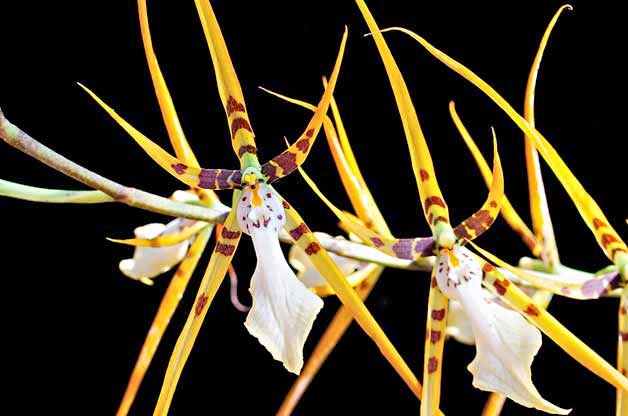A fingernail-size frog that can morph its skin texture from spiny to smooth in just minutes is the first shape-shifting amphibian ever found, according to a new report.
The tiny "mutable rain frog" (Pristimantis mutabilis) was discovered on the western slopes of Ecuador's Andes Mountains, in a protected cloud forest reserve. The misty, fog-enshrouded Chocó cloud forest is a biodiversity hotspot, and the protected area, called Reserva Las Gralarias, is also home to several rare birds and butterflies. A new glass frog species, the Las Gralarias glass frog, was reported there in 2012.
Scientists from Cleveland's Case Western Reserve University and Cleveland Metroparks found the shape shifter during their annual survey of the reserve's amphibian population. For the past 10 years, Katherine Krynak, a biologist and Case Western graduate student, and Tim Krynak, a naturalist and Metroparks project manager, have walked the reserve trails together at night, listening for frog calls and scanning for rare species.
The pair first spotted the frog in 2006 and only snapped a photo, but later realized it could be a newfound species when they enlarged the image. They started calling the frog a "punk rocker" for its spiny-textured skin. "It wasn't until we saw the amazing texture of its skin that we thought, 'wow, this is something different,'" Katherine Krynak told Live Science.
A female mutable rain frog is just 0.8 to 0.9 inches (20 to 23 millimeters) long, and males are even smaller, the new study reports. The rain frogs are a species-rich group that skips the tadpole stage and develops into frogs directly within their eggs.
Lead study author Juan Guayasamín, a professor at the Universidad Tecnológica Indoamérica in Ecuador, first suggested the little frog could be a new species, Krynak said. In 2009, the Krynaks finally saw another punk rocker frog and grabbed it for a detailed photo session, putting it in a small plastic cup overnight.
But when Katherine Krynak opened the cup the next morning, the frog's spines were gone. Thinking she had nabbed the wrong frog, Krynak added moss to the cup to make the frog more comfortable until they could return it to the forest that night. "We were both so disappointed because it had taken years to find another one," she said.
But the Krynaks said they couldn't believe their eyes the next time they checked on the frog. Its spiny skin texture had returned.






.jpg)



.jpg)






.jpg)


















.png)









